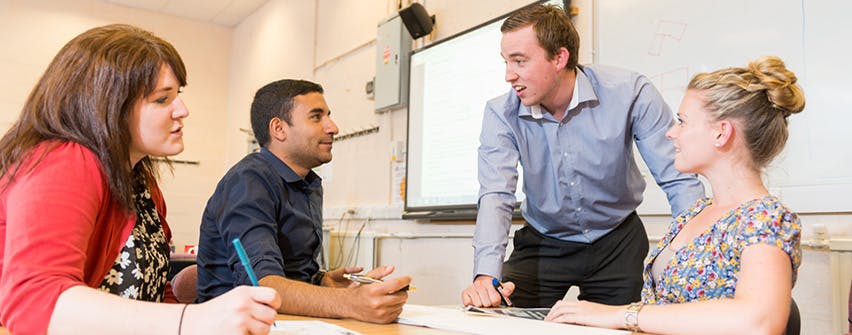For Hopeful Matters: a 1000 Little Fires, this blog accepts hooks’ challenge to remember the body in the process of building transgressive learning spaces:
‘Acknowledging that we are bodies in the classroom has been important for me.’ (Ch. 10)
New challenges face educators seeking to acknowledge the body. How do we remember the body as a site of power in a disembodied learning environment, whether a digital space or a depopulated classroom? How do we connect acknowledging bodies in the classroom with the politics of border violence of a community from which students and colleagues can be bodily removed?
Rhiannon Lockley
Foundation year lecturer, Health, Education and Life Sciences

In Teaching to Transgress, bell hooks reminds us that to truly liberate, a classroom must be recognised on its organic level. It is a shared space in which bodies (racialised, gendered, allowed or denied freedom of movement and autonomy) come together. Recognising this embodied classroom creates the space for hearing, seeing, sensing one another in a way which allows collaborative learning: it is a matter of power. As hooks notes,
“The person who is most powerful has the privilege of denying their body” (1994:137)
The podium or front desk and the traditional classroom layout order bodies in a way which masks the lived organic world, reinforcing a mind/body binary in which the teacher can relax in the predictably of bodies, like ideas, being set in place. We are challenged by hooks to remember the body in the classroom. In remembering the body, we remember the power systems of class, race, gender, sexuality and disability, erased by the comfortable mind/body hierarchy and the “romance” of the mind freed from the body. In remembering the body, we remember these differences and the power they carry, a power obscured in the classroom as a result of the way in which bodies are ordered and contained.
The disappearing of the body in the classroom, hooks notes, is part of the process in which education is falsely presented as neutral. Knowledge brought by the educator is presented as unquestionable fact, divorced from the body delivering it:
“The erasure of the body encourages us to think that we are listening to neutral, objective facts, facts that are not particular to who is sharing the information.” (1994:147)
The project of classroom embodiment is urgent: to develop emancipatory classrooms, to teach to transgress, the body must be repeatedly recognised as present and shaping the classroom. As we consider hooks’ rich legacy and this key aspect of remembering the body, two clear challenges present themselves.
The first challenge is the challenge of the disembodied classroom. In a hybrid or online teaching space, we see the ultimate erasure of the power systems written onto the body. An absent body cannot be read for race, for gender, for class, but losing our capacity to sense these power differences in the classroom does not mean that they are absent. A hidden body in an online space is not a body divorced from a lived world. It is not a body which has been protected from the imposition of power differences. For many reasons including the material cost and labour of attending an educational institution, we are looking into a future where students appear to be increasingly absent from material learning spaces, and pandemic-retained digital learning spaces. Even more than a traditional classroom, these spaces present opportunity to hierarchical learning systems. Unchallenged, they can be used to reinforce a model of the mind as separate from the body; for power-saturated knowledge systems to be presented as neutral transfer of facts; retreat from the body as a site of power, experience, and difference; an acceleration of “the erasure of the role of university settings as sites for the reproduction of a privileged class of values, of elitism” (2004:149). There is much work to be done to take collective ownership of these emerging spaces. How do we humanise and create transgressive educational spaces in the absence of the human body?
Secondly, in remembering and acknowledging the body in the classroom, we are presented with bodies not safe in the vacuum of sanctuary we like to imagine as the space education occupies, but bodies under siege. In the UK educational institutions are part of the terrain of the hostile environment, instructed to enforce borders through monitoring and reporting migrants and international students to the Home Office, through transmitting “British” values and implicit or explicitly the valueless-ness of non-Britishness, through complying with the Prevent strategy and thus imposing an embodied mistrust (a new beard, a hijab, a change of dress?) at complete odds with hooks’ vision of the emancipatory classroom.

We are not neutral education transmitters but bodies in a much bigger struggle in which it is not merely a computer screen but a Home Office raid which can disappear a student or colleague into a detention centre and onto a deportation flight.
We fight for agency to critique these systems of violence against the body in our classrooms for ourselves and for our students, but community resistance to immigration raids in Glasgow, Peckham and other places demonstrate the capacity of educators to write out our critique with our bodies as well as our words by taking direct action.
Maybe the key challenge in our search for how we take on hooks’ legacy of embodiment is rebuilding the connections to the embodied world being closed down by the reforming terrain of the education system. Through solidarity, through acknowledging the body outside of as well as within the walls of the institution, we can situate the emerging classroom as a lived space in a wider embodied community. In doing so, we can recognise the classroom not as a static hierarchical island but as part of a wider community subject to dehumanising border violence. To teach to transgress, hooks may be calling us to create the spaces to acknowledge and critique the body under siege, but maybe the wider challenge is to use our bodies as active participants in this struggle.
Reference
hooks, b., 1994. Teaching to transgress. London: Routledge.
